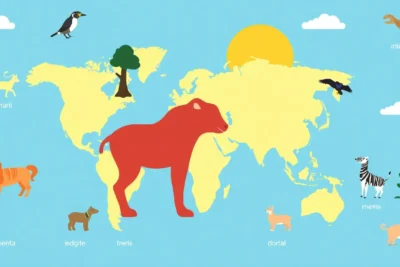
The Equation of Eternity
hace 1 año · Actualizado hace 1 año
Este test de nivel C2 está diseñado para estudiantes que buscan perfeccionar su comprensión lectora a través de una narrativa envolvente y desafiante. Consta de 25 preguntas que pondrán a prueba tu habilidad para interpretar ideas complejas, analizar a fondo personajes y captar matices esenciales en el texto.
Acceder a más Test de Inglés Gratuitos
Historia
In a secluded observatory atop the frozen peaks of Mount Aether, a group of the world’s most brilliant minds had gathered to solve a mystery that spanned millennia. Known as the Eternity Equation, it was a formula said to encapsulate the fundamental truth of existence—a riddle left behind by an ancient civilization whose traces had been found scattered across the galaxy.
Dr. Celeste Orin, a theoretical physicist renowned for her work on quantum entanglement, had been invited to lead the project. She was joined by a diverse team: Arjun Malik, a mathematician; Professor Lila Voss, a historian fluent in the symbols of the lost civilization; and Kai Reynolds, a computer scientist tasked with decoding the patterns that eluded even the most advanced algorithms.
The observatory was more than a research facility. It was a monument to human ambition, its domed roof adorned with inscriptions of mathematical constants and philosophical aphorisms. In its center stood the Nexus Array, a machine capable of simulating the conditions under which the Eternity Equation might reveal its true form.
The project began with an analysis of the fragments discovered across the galaxy—symbols etched into crystalline structures, resonating with an energy that defied measurement. Lila identified recurring motifs: spirals within spirals, suggesting infinite recursion. “It’s not just a formula,” she said. “It’s a map—a guide to something beyond our understanding.”
As the team worked, the equation began to take shape. Arjun identified a pattern that combined elements of fractal geometry and prime number theory, while Celeste proposed that the equation operated in a multidimensional framework, collapsing and expanding like a living organism.
But the breakthrough came when Kai integrated the equation into the Nexus Array. The machine pulsed with light, and for a moment, the team saw a glimpse of something extraordinary—a three-dimensional projection that resembled a galaxy, its spirals glowing with an inner fire.
“It’s beautiful,” Celeste whispered. “But what does it mean?”
As they studied the projection, they noticed anomalies. The spirals seemed to shift, as if reacting to their presence. Lila speculated that the equation was not static but interactive—a dialogue between observer and observed.
Then, the unexpected happened. The Nexus Array produced a signal, a series of tones that resonated through the observatory. “It’s responding to us,” Arjun said. “The equation isn’t just a discovery—it’s alive.”
The signal intensified, and the team realized that the equation was attempting to communicate. Using the Nexus Array, they translated the tones into symbols, forming a message: “To know eternity, you must step beyond time.”
The message posed a dilemma. The team debated whether to proceed, knowing the risks of tampering with something so profound. Celeste argued that they had a responsibility to continue. “If this is the key to understanding the universe, we cannot turn away,” she said.
Using the Nexus Array, they activated the equation’s full potential. The observatory was bathed in light, and the team found themselves in a space that defied description. It was neither here nor there, neither now nor then. It was eternity—a state where all possibilities existed simultaneously.
In this space, each member of the team saw a vision. Celeste saw herself as a child, gazing at the stars, her mind alight with curiosity. Arjun saw patterns that stretched beyond infinity, their complexity both humbling and exhilarating. Lila saw the faces of the ancient civilization, their expressions serene, as if welcoming her into their knowledge.
But the visions came with a cost. The longer they remained, the more their sense of self began to blur. Kai was the first to voice concern. “We’re losing ourselves,” they said. “We have to return.”
Reluctantly, Celeste deactivated the Nexus Array. The light faded, and the team found themselves back in the observatory. But they were not the same. Each carried a fragment of eternity within them, a knowledge that could not be put into words.
The Eternity Equation was left incomplete, its full truth tantalizingly out of reach. Yet, the project had succeeded in another way. It had shown the team, and perhaps humanity, that the pursuit of understanding was not about finding answers but about embracing the infinite questions.
Years later, Celeste would reflect on their journey. “The equation was never meant to be solved,” she wrote in her memoir. “It was meant to be experienced—a reminder that the universe is not a problem to be fixed, but a mystery to be lived.”
The Equation of Eternity became a legend, inspiring scientists, philosophers, and dreamers to look beyond the boundaries of knowledge and into the boundless expanse of possibility.
Preguntas
Si quieres conocer otros artículos parecidos a The Equation of Eternity puedes visitar todos nuestros artículos de C2.
Deja una respuesta


Artículos que te pueden interesar